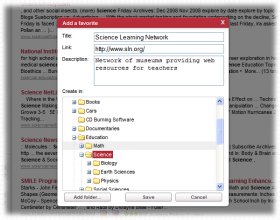|
Education
Web
Viewing 1-5 of 5 total results
definition maps, analogies, using the dictionary and other reference materials, using word parts, using morphemic analysis, using context clues ) word families: A collection of words that share common ortho- graphic rimes (e.g., thank, prank, dank). word recognition strategies:...
1
0
definition maps, analogies, using the dictionary and other reference materials, using word parts, using morphemic analysis, using context clues ) word families: A collection of words that share common ortho- graphic rimes (e.g., thank, prank, dank). word recognition strategies: Strategies for determining the pronun- ciation and meaning of words in print.
54
0
http://www.k12.wa.us/CurriculumInstruct/reading/pubdocs/ReadingEALR-GLE.pdf#page=54
www.k12.wa.us/CurriculumInstruct/reading/pubdocs/ReadingEALR-GLE.pdf#page...
definition maps, analogies, using the dictionary and other reference materials, using word parts, using morphemic <span class="highlight">analysis</span>, using context clues ) word families: A collection <span class="highlight">of</span> words that share common ortho- graphic rimes (e.g., thank, prank, dank). word <span class="highlight">recognition</span> strategies: Strategies <span class="highlight">for</span> determining the pronun- ciation and meaning <span class="highlight">of</span> words in print.
features (e.g., paragraphs, topic, sentence, index, glossary, table of contents) and graphic features, (e.g., charts, maps, diagrams) to comprehend information. 2. Develop an understanding of the organizational structure of printed material (e.g. chronological, sequential...
1
0
features (e.g., paragraphs, topic, sentence, index, glossary, table of contents) and graphic features, (e.g., charts, maps, diagrams) to comprehend information. 2. Develop an understanding of the organizational structure of printed material (e.g. chronological, sequential, procedural text). 3.1.7 B. Phonological Awareness No additional indicators at this grade level. 3.1.7 C. Decoding and Word Recognition 1. Distinguish among the spellings of homophones (e.g. cite, site, sight). 2. Apply spelling rules and
18
0
http://www.nj.gov/education/cccs/2004/s3_lal.pdf#page=18
www.nj.gov/education/cccs/2004/s3_lal.pdf#page=18
features (e.g., paragraphs, topic, sentence, index, glossary, table <span class="highlight">of</span> contents) and graphic features, (e.g., charts, maps, diagrams) to comprehend <span class="highlight">information</span>. 2. Develop an understanding <span class="highlight">of</span> the organizational structure <span class="highlight">of</span> printed material (e.g. chronological, sequential, procedural text). 3.1.7 B. Phonological Awareness No additional indicators at this grade level. 3.1.7 C. Decoding and Word <span class="highlight">Recognition</span> 1. Distinguish among the spellings <span class="highlight">of</span> homophones (e.g. cite, site, sight). 2. Apply spelling rules and
news stories, and almanacs . EL.05.RE.18 Use the features of informational texts, such as formats, graphics, diagrams, illustrations, charts, maps, and organizational devices to find information and support understanding. EL.05.RE.19 Find information in specialized materials (e....
1
0
news stories, and almanacs . EL.05.RE.18 Use the features of informational texts, such as formats, graphics, diagrams, illustrations, charts, maps, and organizational devices to find information and support understanding. EL.05.RE.19 Find information in specialized materials (e.g., thesaurus, almanac, newspaper). EL.05.RE.20 Follow multiple-step directions (e.g., for completing an experiment or an activity or for using a product) . increase word knowl- edge through systematic vocabulary development
1
0
http://www.ode.state.or.us/teachlearn/real/documents/el05.pdf#page=1
www.ode.state.or.us/teachlearn/real/documents/el05.pdf#page=1
news stories, and almanacs . EL.05.RE.18 Use the features <span class="highlight">of</span> informational texts, such as formats, graphics, diagrams, illustrations, charts, maps, and organizational devices to find <span class="highlight">information</span> and support understanding. EL.05.RE.19 Find <span class="highlight">information</span> in specialized materials (e.g., thesaurus, almanac, newspaper). EL.05.RE.20 Follow multiple-step directions (e.g., <span class="highlight">for</span> completing an experiment or an activity or <span class="highlight">for</span> using a product) . increase word knowl- <span class="highlight">edge</span> through systematic vocabulary development
Glossaryreadingglossary.pdf
play. √ Rising Action Story Map - see graphic organizers root (words) - n. 1. the basic part of a word that usually carries the main component of meaning and that cannot be further analyzed without loss of identity. 2. in a complex word, the meaningful base...
1
0
play. √ Rising Action Story Map - see graphic organizers root (words) - n. 1. the basic part of a word that usually carries the main component of meaning and that cannot be further analyzed without loss of identity. 2. in a complex word, the meaningful base form after all affixes are removed. Note: a root may be independent, or free, as read in unreadable, or may be independent, or bound, as -liter- (from Greek for letter in illiterate. rhythm of speech – using a speaking voice with
1
0
http://www.ksde.org/LinkClick.aspx?fileticket=FLfON%2fdrZ7Q%3d&tabid=142&mid=8050&forcedownload=true#page=16
www.ksde.org/LinkClick.aspx?fileticket=FLfON%2fdrZ7Q%3d&tabid=142&mid=805...
play. √ Rising Action Story Map - see graphic organizers root (words) - n. 1. the basic part <span class="highlight">of</span> a word that usually carries the main <span class="highlight">component</span> <span class="highlight">of</span> meaning and that cannot be further analyzed without loss <span class="highlight">of</span> identity. 2. in a complex word, the meaningful base form after all affixes are removed. Note: a root may be <span class="highlight">independent</span>, or free, as read in unreadable, or may be <span class="highlight">independent</span>, or bound, as -liter- (from Greek <span class="highlight">for</span> letter in illiterate. rhythm <span class="highlight">of</span> speech – using a speaking voice with
Apply text features (e.g., directions, legend, index, and glossary, sequence, bold face print, headings) to explain text. (725.01.a) CL: Content Limit: Assessed in the classroom, not on the ISAT.#7;6.LA.1.2.3 Identify graphic sources of information (e.g., maps, graphs, illustra...
|
